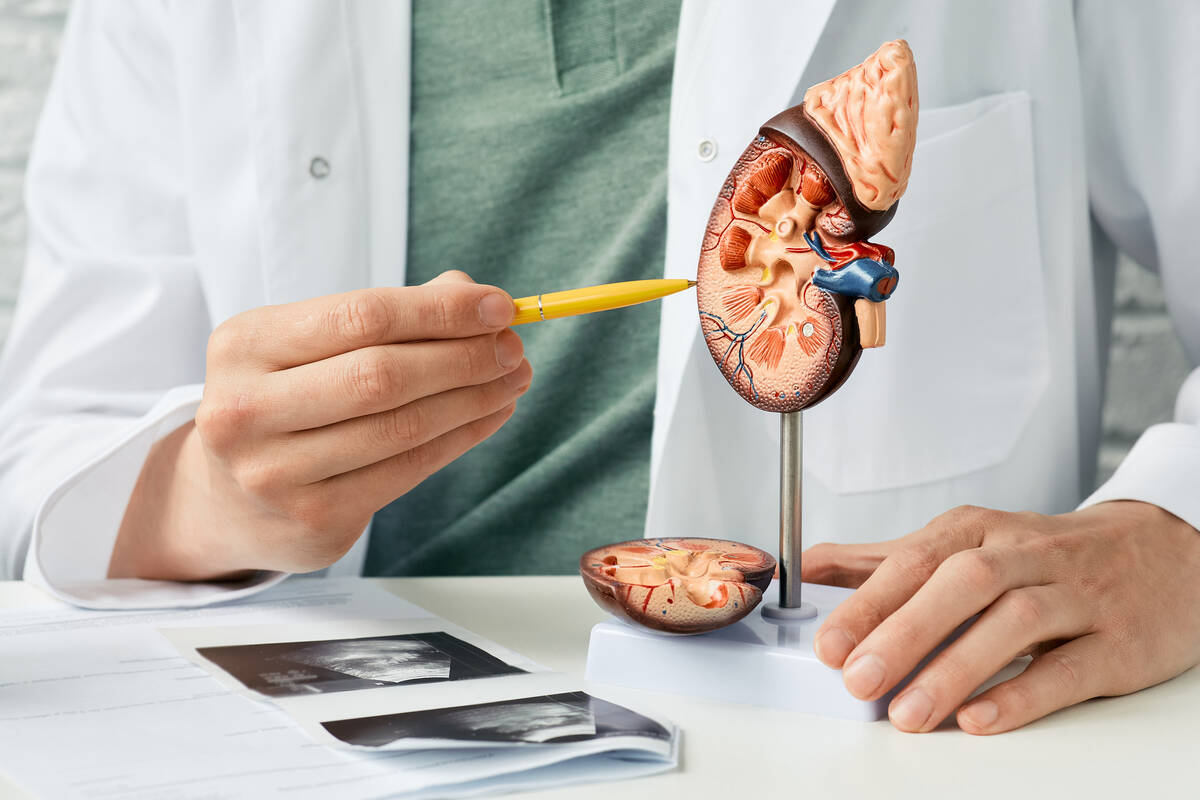What’s the difference between kidney cysts and polycystic kidney disease?
March is National Kidney Month, which makes this a good time to learn more about the difference between two kidney disorders — kidney cysts and polycystic kidney disease.
Your kidneys are situated in the back of your abdomen under your lower ribs, one on each side of your spine. One of the important jobs of the kidneys is to clean the blood. As blood moves through the body, it picks up extra fluid, chemicals and waste. The kidneys separate this material from the blood, and it’s carried out of the body in urine. If the kidneys are unable to do this and the condition is untreated, serious health problems result, with eventual loss of life.
Two kidney disorders with similar names but different circumstances are kidney cysts and polycystic kidney disease.
Kidney cysts
Kidney cysts are round pouches of fluid that form on or in the kidneys. Kidney cysts can occur with disorders that may impair kidney function. But more often, kidney cysts are a type called simple kidney cysts. Simple kidney cysts aren’t cancer and rarely cause problems. Complex cysts, however, need to be watched for changes that could be cancer.
In one large study, about 1 in 10 people had simple kidney cysts, and in people 50 and older, nearly 1 in 5 had simple kidney cysts, according to the National Institute of Diabetes and Digestive and Kidney Disorders.
It’s not clear what causes simple kidney cysts. One theory suggests that kidney cysts develop when the surface layer of the kidney weakens and forms a pouch. The pouch then fills with fluid, detaches and develops into a cyst.
Simple kidney cysts typically don’t cause symptoms, but if they grow large enough, symptoms may include:
Dull pain in the back or side
Fever
Upper stomach pain
If a simple kidney cyst causes no symptoms and doesn’t affect kidney function, you may not need treatment. Instead, your health care professional may recommend that you have imaging tests, such as ultrasounds, over time to see whether your kidney cyst changes. If a simple kidney cyst is causing symptoms, treatment may include piercing and draining the cyst, then filling it with a solution to prevent recurrence, or surgery to remove the cyst.
Polycystic kidney disease
Polycystic kidney disease is an inherited disorder in which clusters of noncancerous cysts develop primarily within your kidneys, causing your kidneys to enlarge and lose function over time. The cysts vary in size and can grow very large. Having many cysts or large cysts can damage your kidneys.
Polycystic kidney disease is one of the most common genetic disorders, affecting about 500,000 people in the U.S., according to the National Institute of Diabetes and Digestive and Kidney Disorders.
Symptoms of polycystic kidney disease can include:
High blood pressure
Back or side pain
Blood in your urine
A feeling of fullness in your abdomen
Increased size of your abdomen due to enlarged kidneys
Headaches
Kidney stones
Urinary tract or kidney infections
Kidney failure
Treating polycystic kidney disease involves dealing with the symptoms and complications in their early stages, including:
Managing cyst growth with medication.
Delaying progression of the disease by controlling high blood pressure.
Lifestyle strategies to help your kidneys stay as healthy as possible for as long as possible, including maintaining a healthy weight, drinking fluids throughout the day, following a low-salt diet and eating less protein.
Controlling pain.
Prompt treatment of bladder or kidney infections with antibiotics to prevent kidney damage.
Preventing obstructive blood clots in the urinary tract by drinking extra fluids at the first sign of blood in the urine.
Dialysis or a kidney transplant if kidney failure occurs.













